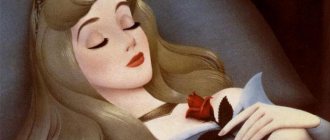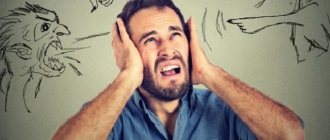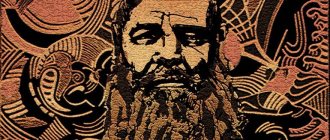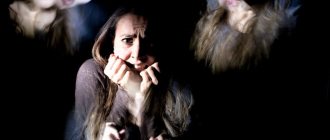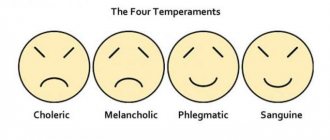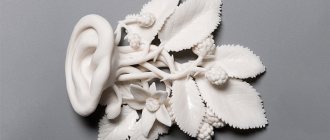A person can be in a state in which his perception of the real world is disrupted. Interaction with the external environment, as well as all the information it receives, turns into hallucinations, which are often called a deception of consciousness. They consist of many ideas, memories and feelings of the patient.
The peculiarity of hallucinations is that they are not controllable and do not appear at the request of the patient. This is their main difference from invented fantasies. To understand this phenomenon in more detail, it is necessary to carefully study all the nuances of the disease, as well as identify the signs of true and false hallucinations.
What are hallucinations
They are called images of various objects, people, as well as situations that are perceived by a person as absolutely real, but in reality they are absent. These images arise spontaneously. Some are bright, sensitive and extremely persuasive. They are considered to be true hallucinations. But there is another type of them. Such attacks are perceived by internal hearing or vision, while being formed in the depths of consciousness and felt as a result of the influence of external forces. They cause visions, vague images, various voices and sounds. They are called pseudohallucinations. Any type of mental disorder requires complex treatment and long-term medical supervision.
Medical help for hallucinations
Hallucinations are one of the manifestations of psychosis, which occurs in various mental pathologies (schizophrenia, schizoaffective disorder, organic, intoxication and other psychoses).
True hallucinations, like “false” hallucinations (pseudohallucinations), cannot be convinced and require drug treatment. Patients are not critical of them; their criticism of their painful condition is formal.
And since such patients need antipsychotic therapy, sometimes convincing them to take treatment is not an easy task. But only correctly selected individual antipsychotic therapy, as well as compliance with the required doses of drugs and timing at different stages of treatment, allows such patients to return to the normal life that was before the disease and be socially adapted!
We constantly detect plagiarism on our materials without providing a clickable follow link to them. In this case, without warning, we turn to Google DMCA , which leads to pessimization of the plagiarist. On the contrary, we welcome the popularization of our materials, but with the obligatory active follow link to this page psyhosoma.com/gallyucinacii-istinnye-i-lozhnye-osobennosti-povedeniya-i-diagnostiki/ .
The essence of the symptom of hallucinations
The final formulation, which reflects the essence of true hallucinations today, was revealed by Jean Esquirol. He defined the essence of this psychiatric deviation as a person’s deep conviction that at the current moment he is experiencing a sensory perception of a particular situation, while all possible objects from the hallucination are not within his reach. This definition is also relevant in modern society.
The essence of the symptom is that a person’s sphere of perception of reality is disrupted. During an attack, he feels and realizes the presence of various objects that are absent in the real world. The patient is completely convinced that he is right and does not give in to any refuting beliefs. This happens due to the fact that a person is no longer able to distinguish between reality and hallucination.
Olfactory, gustatory and tactile hallucinations
Olfactory hallucinations. as one of the positive symptoms of schizophrenia. usually manifested by an unpleasant odor (“poisonous gases”), gustatory — by an “unusual taste”; as a rule, both of them are associated not only with each other, but also with persecutory ideas: poisoning, influence, persecution. It must be remembered that olfactory hallucinations are often observed in temporal lobe epilepsy; here they appear periodically, often accompanied by impaired perception.
Tactile (haptic, somatic, kinesthetic) hallucinations rarely appear, reflecting a distorted perception of touch, altered sensations of the body. At the same time, the patient feels an impact (electrical, magnetic, radiation, etc.), accompanied by a burning sensation, pricking, impact, etc. He may feel stretching, twisting, and pain in the internal organs.
Descriptions of altered sensations, especially in the genitals, may seem completely absurd to an outside observer.
Return to Contents
Signs of hallucinations
A patient experiencing true hallucinations, despite pathologies, can quite adequately perceive the environment and real reality. At the same time, his attention is divided chaotically, focusing mainly on false images. A person does not feel the pain of attacks, perceiving them as if they were a natural part of his life. For most people suffering from this disease, hallucinations become more real than real events and people. They often disconnect from what is happening in reality and become immersed in their own artificial world. During such attacks, the following changes in behavior occur in a person:
- When deceiving consciousness by hallucination, a person actively gestures. He begins to look closely at something, worry, turn away, cover his eyes with his hands, look around, wave away or defend himself. The patient may try to grab a non-existent object, throw off invisible clothes.
- Under the influence of true hallucinations, various actions can be performed. They will reflect a deception of perception: a person will hide, look for something, catch, attack people and himself. He will also be prone to destroying objects around him.
- The patient may try to commit suicide.
- Auditory hallucinations will be pronounced. A person will freely talk with non-existent people, as he will be completely confident in their real existence.
- True hallucinations are characterized by active expression of emotions: rage, tears, regret, anger, delight or disgust.
A person may experience difficulty if his reality and hallucinations affect perception with equal force. In this case, he develops a split personality, which constantly balances between extremes of behavior. Most often, sick people begin to hear the voice of God, feel his touch and believe that they are messengers of heaven or prophets.
Classification of perception failures
Failures in the perception of the surrounding world can occur in different ways; in this regard, the following main types of hallucinations are distinguished:
- Visual hallucinations. In this case, various pictures and images pop up before your eyes. It is possible that the hallucination becomes a reproduction of an entire scene and even a plot in which the patient plays an important role or is present from the position of an observer.
- Hearing disorders. A person hears whispers, speech and even screams, which can be both positive and negative. People suffering from drug addiction are most susceptible to this phenomenon. Auditory hallucinations often occur in patients with schizophrenia.
- Olfactory hallucinations. The patient smells odors that cannot exist. Most often this happens due to damage to the temporal part of the head, or it becomes a consequence of schizophrenia.
- Unreasonable change in taste . Tastes that are not characteristic of the food or drink appear.
- Tactile sensations . The patient feels touching his body, even though there is no one nearby.
- Hypnagogic (hypnopompic) hallucinations. Optical illusion. Occurs in healthy people during awakening, or vice versa - falling asleep.
What are hallucinations?
They can be the result of deception of any of the five senses of a person. Hallucinations can be visual, auditory, gustatory, olfactory or tactile. There are also hallucinatory images of general feelings that are caused by worries about processes occurring in the body, in the feeling of the presence of a foreign body or object inside. All types of true hallucinations are characterized by the following behavioral signs:
- Auditory hallucinations. A person begins to hear people's voices and various sounds. In his mind, these sounds can be quiet or loud. Voices can belong to familiar people and are constantly reproduced in hallucinations, or they can be episodic. By their nature, they can be narrative, accusatory or imperative. A monologue or dialogue in different languages may sound in the patient’s head. True auditory hallucinations are easier to identify in a patient than other types.
- Visual hallucinatory images. During them, a person can see absolutely simple situations, objects, people or events. It is also likely that non-existent animals or other creatures will appear in his mind. The patient can participate in imaginary scenes, actively gesticulate, and perform various physical actions.
- Taste hallucinations. They contribute to the sensation of any tastes that do not exist in nature. For example, a sick person may begin to chew a pencil, while experiencing sweetness in the mouth. This sign of true hallucinations is the rarest.
- Olfactory hallucinations. From them the patient can smell an imaginary aroma of perfume or the smell of rotten meat. At the same time, it will seem absolutely real to him. A person’s gag reflex may even work due to such a deception of consciousness.
- Tactile hallucinations. A patient suffering from the disease feels touches that do not exist: insects on the skin, tied ropes, a noose on the neck, animal bites or blows. He can also feel heat, frost or raindrops on his body. Such hallucinations can focus both on the surface of the skin and under it.
History of the study
Such a phenomenon as hallucination has been known to mankind since time immemorial, because a person of any era has been subject to disruptions in the psyche and, as a result, distortion of reality. However, until the 19th century, none of the scientists focused on studying and explaining this phenomenon. As a rule, a hallucination in ancient centuries was akin to a mystical skill, witchcraft, or a “vision of seers” and even a “gift from above.”
With the development of such sciences as “psychology” and “psychiatry” in the mid-19th century, scientists paid special attention to this phenomenon. Particularly worth noting is the work of Baillarger, written by the scientist in 1842, in which he outlined in detail the nature and nature of perception disorders. In his opinion, a failure in consciousness occurs due to 3 main factors:
- unwanted enhancement of memory and imagination;
- delay in analyzing what is happening;
- movement of sensory apparatus inside.
It was he who first divided the visions that arise in the patient’s head into 2 types:
- psychosensory - complete hallucinations caused through the joint work of a person’s imagination and his organs of perception;
Kandinsky is one of the first researchers of the phenomena of perception - psychic - incomplete mirages, in the process of reproduction of which only memory and imagination are involved, but the senses do not play a role.
Another scientist, V.Kh., placed special emphasis on the study of incomplete (mental) hallucinations. Kandinsky. In his opinion, pseudohallucinations arise due to stimulation of the sensory areas of the brain. In his book, this phenomenon is described as the appearance of voices “inside the head,” the appearance of visions in the “mind's eye.”
When studying pseudovisions, Kandinsky experimented on a patient. He, in turn, told how he saw an imaginary lion. Despite the fact that the image of an imaginary animal floated in the air in his direction, and soon he felt the touch of paws, the patient was not at all afraid of it, since he perfectly understood that there was no lion next to him.
Pseudohallucinations can appear in the form of thoughts. For example, in the research of L.M. Elazina, the object was a middle-aged patient who claimed that “something” was stealing her thoughts and replacing them with others - alien to her. She clearly heard what the people around her were saying, but at the same time, extraneous voices appeared in her head.
Characteristics of types of hallucinations
In addition to classification according to behavioral characteristics, hallucinatory images are divided into the following types of complexity:
- Protozoa. They can be characterized as unfinished images of perceived situations. For example, it could be: glare, sparks, luminous spots, rays or circles. All these types of images are visual. Among the simplest auditory hallucinations, one can distinguish unusual rustling sounds, creaks, groans, and screams of people or animals.
- Subject. Most often they affect one analyzer. The patient may see visual hallucinations: a person, an animal, a part of the body or an object. From auditory ones, these include words of speech or song, dialogues between several people.
- Complex. This type of hallucination is considered the most dangerous. The patient begins not only to see non-existent people, but also to communicate with them. Alien creatures and mythical creatures may also appear to him. Since a person does not control such phenomena, he can harm himself by trying to fight or fight with the participants in his images.
True and false hallucinations in schizophrenia
Pseudohallucinations occur only in patients with schizophrenia; they are a symptom of acute or chronic schizophrenic psychosis, therefore, they require immediate treatment, since their presence can lead not only to dangerous actions of the patient, but also to the formation of a schizophrenic defect.
Patients believe that pseudohallucinations were “made” by someone’s evil will especially for them or that these painful experiences were forcibly sent to them by someone from some unknown place (underground, in space, in another dimension). They often know who does it.
In schizophrenia, both true hallucinations and false hallucinations (pseudohallucinations) occur. However, true hallucinations are observed only at the initial stage of the disease, as well as in the late period with formed schizophrenic dementia (severe defect). In this case, both auditory and visual true hallucinations are observed, as well as tactile, etc.
True hallucinations
They are always projected from the outside world and are inextricably linked with human reality. True visual hallucinations can take place in familiar surroundings. For example, a fictional wild animal may be hiding in a real room or behind a wall. Such visions do not cause a person to have an ounce of doubt that they really exist. True verbal hallucinations are very vivid and realistic. The patient is more likely to believe that the error of perception is real life, his relatives and friends, than unreal images in the mind.
True and false hallucinations can overtake every person. Especially if he takes psychotropic medications, constantly takes antidepressants, or has suffered a brain injury. It is very important to detect their occurrence in time and provide your loved one with appropriate medical care.
Diagnostic criteria
Disorders of real world perception can be assessed using several criteria. The main general criteria include the state of consciousness and thinking, the level of critical attitude towards oneself and the world, the maturity of the emotional sphere. It also evaluates how realistic the patient perceives the world around him and its relationship with objective reality. The doctor should find out the possible connection between productive symptoms and the patient’s personality traits and subjective experiences.
Particular criteria relate to hallucinations and their content. The doctor’s responsibilities include assessing the location of images in time and space; the degree of intrusiveness, violence, the presence of a sense of accomplishment. It is also important to find out whether there is a connection with other positive and negative symptoms. It is worth assessing whether the patient himself criticizes his condition and whether he considers these images to be real. Pseudohallucinations are also characterized by the incompleteness of the image, so this is also worth clarifying.
These criteria help determine the nosology and degree of the disorder.
If the doctor suspects the presence of organic pathology, then he must conduct a series of laboratory and instrumental examinations.
What are pseudohallucinations
This pathology of the human psyche is characterized by the following symptoms:
- A voice may sound in the patient’s head that will push him to certain actions. All visions will depend on him. The voice from your head will guide you, make you see something that doesn’t really exist.
- The patient can completely disconnect from the real environment around him and observe exclusively a hallucinatory image.
- Each deception of perception will make a person think that everything around him is rigged, that the voices or visions are the result of his poisoning or conspiracy. They begin to blame the people around them for abandoning them and handing them over to the doctors who experiment on them.
How do hallucinations occur?
Hallucinatory deceptions of perception can develop through several mechanisms:
- In case of irritation of the receiving or conducting part of the corresponding analyzer. For example, optical illusions can be a consequence of inflammation of the optic nerve, and auditory illusions can be a result of damage at the level of the inner ear. But the phenomena that arise in this case will be very simple, elementary: a person will talk about visible flashes, lines and dots, audible ringing, squeaking, crackling, etc.
- In case of isolated irritation or damage to the corresponding cortical area of the analyzer (the area of the cerebral cortex responsible for processing information received from the outside). Such hallucinations are more objective and formalized, and are of a repetitive nature. For example, with pathology of the left temporal region (in right-handed people), verbal deceptions of perception (in the form of voices) appear, and damage to the right temporal cortex is characterized by musical, gustatory and olfactory phenomena. Moreover, both complex and combined elementary true hallucinations can arise. This happens with migraines, meningitis and encephalitis, tumors, epilepsy, vascular pathology, infections occurring with severe intoxication, after a head injury, etc.
- Due to abnormal activation of various parts and neuronal connections of the brain. In this case, there is an imbalance of various neurotransmitters (substances used in the nervous system to transmit inhibitory and activating impulses). This mechanism is characteristic of endogenous mental disorders, primarily schizophrenia.
The first 2 mechanisms can be reproduced experimentally, with electrical stimulation of the corresponding area. This is how the various zones of representation in the cortex were discovered. The 3rd mechanism continues to be actively studied; there is a gradual accumulation and systematization of knowledge through the use of MRI, EEG and a number of other techniques.
Elucidating the pathogenesis of hallucinations in endogenous diseases will make it possible to create more effective and safe drugs and allow more accurate selection of treatment regimens.
Differences between true hallucinations and pseudohallucinations
Their main difference is considered to be their expressive focus on the outside world, as well as their connection with actually existing objects and people. A true hallucination is when a person sees an imaginary spot on a real chair, hears a sound outside the door, smells food or smells perfume. Pseudo-hallucination can be called exclusively his internal sensations, which are in no way connected with surrounding things. The patient may feel foreign objects in his body and hear people's voices in his head. He may also experience pain caused by deception of perception.
Pseudohallucinations differ from true hallucinations in the level of danger to others. Such pathology does not depend on thoughts, memories or situations lived by a person. They have an intrusive form, an accusing and imperative character. A patient who suffers from pseudohallucinations can quickly go crazy, harm others and commit suicide.
Similar violations
True hallucinations require differentiation from 2 conditions: illusions and pseudohallucinations. Correct differentiation of these types of disorders allows the doctor to correctly assess the psychopathological picture of the disease, which is the basis for adequate diagnosis in psychiatry.
Certain difficulties may also arise in the presence of delusional disorders. True hallucinations and delusions are often closely related to each other. In this case, deceptions of perception initially arise, which the patient tries to logically explain. As a result, he develops a secondary interpretative delusion based on an ongoing hallucinatory syndrome. But the formation of delusional disorders is possible even without previous disturbances in the sphere of perception.
Illusions
Illusions also relate to the pathology of perception and are also clearly tied to specific sensory organs. But, unlike true hallucinations, they occur in the presence of real stimuli from the surrounding world. In fact, illusions are a distorted perception of existing objects. Typical examples of illusory deceptions: words heard in rhythmic noise, the “resemblance” of clothes hanging in the semi-darkness to a human figure, the “vision” of snakes and worms in swaying shadows on the wall.
Illusions are not uniquely pathological phenomena; they often occur in mentally healthy people. Many people regularly encounter the phenomena of pareidolia (pareidolic illusion), when something different is seen in real objects. For example, in an abstract, floral or geometric pattern, stylized men are visible, a figured cloud resembles an animal, and in photographs of landscapes faces appear to be visible.
Pareidolia often occurs in children, impressionable and artistically gifted people. But such illusions can also be a harbinger of more serious disorders, occurring shortly before the formation of hallucinations.
Pseudohallucinations
Another similar phenomenon is pseudohallucinations. This is clearly a pathological symptom that never develops in a healthy person and is characteristic of disorders only of an endogenous nature.
With pseudohallucinations, a person perceives non-existent things differently than with true hallucinations. Moreover, the experiences that arise in him are not tied to the senses; they arise, as it were, in the internal field of consciousness. At the same time, patients use the verbs “hear” and “see”.
Pseudohallucinations are actually the patient’s own thoughts and images, which his brain begins to perceive as alien, coming from outside, imposed.
With auditory pseudohallucinations, a person talks about “voices” heard in the head or in certain parts of the body, with visual ones – about the appearance of images before the inner gaze. These experiences always seem to be made, imposed. Patients often characterize them as “otherworldly,” “alien,” “technical,” and talk about the very distant location of their source and perception by the “inner ear,” “the whole brain.”
Pseudohallucinations are always interpreted delusionally. In this case, they usually talk about influence with persecution, external control and management. The resulting condition is regarded as severe psychosis and requires treatment from a psychiatrist.
Causes of hallucinations
The reason for clouding of consciousness, with the presence of true visual hallucinations, can be mental, somatic diseases, chronic stress, as well as taking medications that negatively affect the nervous system. Among mental illnesses, hallucinations can be provoked by:
- Acute form of schizophrenia.
- Epilepsy attacks.
- Psychosis.
Among somatic diseases, the following pathologies can contribute to hallucinations:
- Brain tumor, concussion or injury.
- Various infections that affect the brain.
- Diseases accompanied by febrile attacks.
- Stroke.
- Atherosclerosis.
- Severe poisoning.
Also, deception of consciousness can occur after taking:
- Alcohol in large doses.
- Drugs.
- Tranquilizing drugs.
- Antidepressants.
- Psychostimulants.
- Certain types of plants that poison the body (belladonna, dope, poisonous mushrooms, etc.).
Pathogenesis and etiology
A disruption in the perception of the surrounding world can occur due to various somatic, neurological and mental diseases. The main reasons that provoke hallucinations:
- Drug addiction and alcoholism . People susceptible to drug and alcohol addiction often become victims of obsessive behavior and paranoia. On this basis, they may be subject to various kinds of eerie visions and frightening sounds. The fears in their subconscious are distorted and embodied in hallucinations. This often leads to panic, a desire to escape, and even suicide.
- Syphilis of the brain . Sharp sounds and voices may occur due to decay of a certain area of the brain.
- Diseases of the cardiovascular system . An illness associated with poor heart function often leads to changes in mood, and this in turn often causes a feeling of fear. Against this background, various mirages may appear.
- Rheumatic diseases . Lead to insomnia, irritability and general weakness. In this state, consciousness is weak, which contributes to the occurrence of hallucinations.
- Brain tumors and cysts . They are (albeit infrequently) another cause of mirages. This is facilitated by exhaustion of the body, damage to certain areas of the brain, as well as taking powerful medications.
- Penetration of infection . The presence of infection leads to a high fever. This, in turn, contributes to the occurrence of hallucinations.
Causes of mirages and visions in older people
In older people, hallucinations occur most often, this is explained by the fact that their body is doubly exposed to various diseases and disorders of a neurological, somatic and mental nature:
- depression;
- cardiovascular diseases;
- senile psychosis;
- brain diseases;
- insomnia;
- tumor.
Also, older people take strong medications, which causes mirages to appear. Often, older people are isolated from society, which may well cause a disruption in their perception of the environment.
Diagnosis of hallucinations
It is very important to be able to distinguish real hallucinations from illusions. If it seems to a person that the sofa in front of him has changed its shape and turned into an animal, or the hanger has become like a human shadow, he sees an illusion. But when the patient claims that he sees an animal, object or person out of nowhere, he is overtaken by a hallucination.
An illusion is a distorted perception of a real object. If a person imagined something, after a close friend’s remark, he will always agree with it, making sure that it is just an optical illusion. When a person sees a real true hallucination, he will never agree that it is not real. After much convincing, he can pretend that he has accepted someone else’s point of view, but in fact, the deception of consciousness will always be a reality for him.
Illusions can occur in an absolutely healthy person. For example, it may seem to him that a mysterious stranger is standing around the corner of a dark alley. This phenomenon may be the result of a fear of the dark or increased caution. Having approached the source of fear, a person can see for himself that the illusion appeared due to the unsuccessful reflection of a nearby object or a car passing nearby. Such situations are quite normal for a healthy person, since everyone has their own fears and concerns about the world around them.
A person suffering from hallucinations, on the contrary, is a sick person who urgently needs the help of doctors. If relatives or friends do not refer him for treatment in time, the consequences can be very disastrous both for the patient himself and for those close to him.
Changes in personality behavior are easy to notice when true and false hallucinations appear. Their differences can play a serious role in the safety of others. False hallucinations are much more dangerous than true ones. Such a person will behave very warily, constantly mutter something, talk in a whisper with imaginary people, and try not to attract unnecessary attention to himself.
If you discover signs of hallucination in one of your friends or acquaintances, you should try to discuss them with the patient. If he really sees a hallucination and not an illusion, you should give him a mild sedative and then put him to bed. After this, you need to urgently call an ambulance and report all the symptoms.
Diagnosis in the presence of hallucinations
To summarize, let us remember the specifics of diagnosis. True hallucinations can rarely go unnoticed for a long time, because their presence in the patient, as a rule, causes a pronounced reaction on his part. It is also necessary to emphasize the following: such a patient believes that what is happening is seen and heard by everyone around him, and not just him.
It is much more difficult to identify the presence of false hallucinations in a patient, since due to autistic dissimulation, which is observed in schizophrenia (and pseudohallucinations occur only in this mental illness), patients hide their experiences. You need to be careful and analyze the behavior of such a patient based on the indirect signs described above, which may characterize the presence of pseudohallucinations.
Example from practice. One woman began to feel depressed. She had a feeling of meaninglessness and completeness of life. There were no relatives to complain to. I didn’t go to the doctors either. One morning she heard a genderless voice in her head commenting on her breakfast. At first he only humiliated her, pointing out the wretchedness of her life. Then he began to convince him of the futility of existence and began to convince him to commit suicide, in the end openly suggesting various methods of suicide. When she bought washing powder, a voice said that it was an excellent poison. Soap - you can hang yourself. For some time, the woman managed to resist such thoughts and lead such a normal life that none of the neighbors of the communal apartment could notice anything was wrong. But the willpower came to an end and one night the patient gave up. The voice ordered him to jump out of the window. The jump from the 4th floor of her apartment was not fatal. A passerby called an ambulance. Once in the inpatient department of a medical facility, she said that she simply decided to wash the window and accidentally fell. The fact of washing windows in the middle of the night did not raise suspicion among doctors. A few weeks later she was returned home, only to repeat her attempt to end her life (again unsuccessfully). Only then did they call a psychiatrist to see her.
Place of hallucinatory syndrome in the structure of schizophrenia
Hallucinatory experiences are one of the most striking symptoms accompanying the course of schizophrenia. They are not isolated, usually accompanied by the formation of ideas of a persecutory nature (persecution, damage, etc.). It is these symptoms that in the vast majority of cases become the reason to consult a doctor at the debut or exacerbation of the disease. That is why there is an opinion that if hallucinations and persecutory mania are present, this is schizophrenia.
But in fact, in schizophrenia, hallucinatory-delusional disorders are classified as second-rank symptoms. That is, their presence is not required for diagnosis. In addition, delusions of persecution and deceptions of perception can occur in other diseases; this is not a highly specific symptom. For example, a similar clinical picture occurs in older people against the background of a progressive neurodegenerative process (Alzheimer's disease, Pick's disease, dementia with Lewy bodies, etc.).
The primary and obligatory sign of schizophrenia is a characteristic disorder of thinking of the “schisis” (splitting) type, with a violation of logic, purposefulness and consistency of judgments. In addition, a typical manifestation of this disease is an increase in the apathetic-abulic state, when the motivation and social activity of the patient irreversibly decreases. At the same time, despite preserved intelligence, the patient may give the impression of being almost mentally retarded.
However, hallucinatory disorders occur in most people with schizophrenia. Moreover, auditory verbal hallucinations, usually of unpleasant content, are characteristic. They can be of a commentating, discussing, condemning, blasphemous, or commanding nature. Pseudohallucinations often occur, which are part of the structure of the syndrome of mental automatisms. At the same time, a person feels that he has fallen under someone’s control; his own thoughts, movements and words seem to him to be made, alien, imposed.
Visual hallucinations in schizophrenia do not occur as often as auditory hallucinations. They can be part of the structure of the hallucinatory-paranoid syndrome or become part of a special oneiric clouding of consciousness, with an influx of multiple scene-like images and the patient’s almost complete immersion in these unusual experiences.
Taste and olfactory hallucinations indicate the course of the disease according to the type of exacerbations, because they are rarely permanent and usually appear when the ideas of persecution, damage and influence are actualized. Such experiences support delusional symptoms and can cause conflicts with relatives and neighbors, whom the patient begins to blame for the poisoning. Tactile hallucinations are rarely detected in schizophrenia.
"Talkative" mushrooms
It is known that in the rituals of shamans of many peoples of the world, psychodysleptic drugs - hallucinogens - play an important role.
Since ancient times, the main psychoactive drug in Siberia and the Arctic has been the red fly agaric.
Among the Khanty, for example, rituals were preceded by a one-day fast, at the end of which the shaman ate 3 or 7 fly agarics (sometimes up to 20) and went to bed. After a few hours, he suddenly woke up, shaken by trembling, declared the will of the spirits, then fell asleep again and began the ritual in the morning.
Among the Koryaks, shamans ate fly agaric mushrooms if they needed to come into contact with evil spirits or the souls of the dead.
The name of fly agaric among the Ural and Siberian peoples is “punk” or “bang” - a synonym for the Iranian name for hemp. Hemp was widely used as an ecstatic remedy by the Scythians. Herodotus described felt-covered shrines with hot stones in the center of the hut. The priests threw hemp seeds onto them and received ecstasy in clouds of intoxicating smoke, in which they came into contact with the spirits and souls of the dead.
In shamanic practice on the American continent, sacred “talking” mushrooms are still widely used: peyote, strafaria and others, as well as extracts from vines, for example, ayahuasca - a decoction, the main component of which is the aquatic vine Banisteriopsis caapi. This drink is the most widespread among the hallucinogens found in the equatorial part of the New World, used by shamans.
This is what Terence McKenna, a writer, philosopher and ethnobotanist who went on a research expedition through the Colombian Amazon in the early 1970s to study hallucinogens used by shamans, wrote in his book True Hallucinations:
“Jivaro shamans in Ecuador take ayahuasca, after which they - and anyone else who takes it - gain the ability to see a substance that is said to be purple or dark blue and bubbles like a liquid. When you vomit after taking ayahuasca, this is the liquid you are throwing up; in addition, it appears on the skin like sweat. This curious thing is what the Jivaro use in most of their witchcraft rituals. All this is kept in the strictest confidence. Eyewitnesses claim that shamans spew liquid onto the ground in front of them and, peering into it, see other lands and times. If they are to be believed, the nature of this liquid is entirely beyond the bounds of ordinary experience; it consists of space-time or thought, or is a pure hallucination, which acquires an objective expression, but always limited to the limits of a liquid.”
Strong tobacco is also used as a hallucinogen on the American continent, used in the form of thick fog, chewing gum or smoke.
Today, it no longer seems amazing to a researcher of primitive cultures when a South American Indian, closing his eyes, begins to describe the details of the location of his home in Europe, the details of the situation. He knows that this miracle was generated by “Neolithic pharmacology,” as it is increasingly officially called.
Many medical institutions today are struggling to uncover the secrets of ancient drugs. Until now, this has been hampered by the very approach to them. It never occurred to anyone that the essence of the matter lay in studying the structures of hallucinations. One of the first steps toward a new view was taken by botanist Richard Evans Shults in 1941, when he identified a plant from the seeds of which the Aztecs prepared “ololihuqui,” a narcotic substance that, according to the chronicle of the conquistadors, allows “to comprehend everything that human thought cannot understand.”
In 1958, information leaked to the US press about the identification of iage, the juice of which dramatically enhances psychotronic (extrasensory) abilities, including the abilities of telepathy, telegnosis and telekinesis. However, the results of all experiments are kept in strict confidence, as they are of military interest.
Diagnostics
The diagnosis is carried out by a psychiatrist. Family members of the patient are the first to notice the presence of deviations in his behavior. The patient himself is often uncritical of the visions and perceives them as part of reality. Conditions with emotionally charged images - frightening, surprising, irritating - are most quickly identified. If the hallucination is constant and does not bother the patient, then the symptom sometimes remains undiagnosed for several years. The examination is performed using the following methods:
- Conversation.
The doctor does not ask direct questions about the presence of hallucinations, but identifies them in the process of communicating with the patient. Since visions are vivid, unusual, cause fear and other experiences, they often become the subject of discussion. Sometimes the psychopathological nature of the described phenomena is obvious, in other cases the doctor requires clarifying information from relatives. - Observation.
Patients with visual hallucinations may stare into the empty space in front of them or look at an empty wall. Sometimes they turn to the side or look back for no apparent reason if the image appears on the periphery of the visual field. Examination of the emerging vision is accompanied by instability of the emotional state: the appearance of anger, fear, surprise. - Pathopsychological tests.
To identify perceptual disorders, special provocative tests are used. Visual hallucinations can be detected during the Reichardt test: the patient is asked to tell what is shown on a sheet of paper that is actually blank. Another provocation option is the Lipman test: pressing on the eyelids can cause visions.
general characteristics
Visual hallucinations are the second most common after auditory hallucinations.
They are perceived as really existing objects, therefore the behavior of patients is determined by the content of false perceptions. Hallucinating patients can stare at empty walls for a long time, dismiss the vision, avoid it, go around it, changing the original route. Unlike memories, fantasies, and ideas, hallucinations arise spontaneously, without reason, regardless of the will of the patient. They cannot change or be driven out by willpower (like unpleasant thoughts). Another feature of visual hallucinations is the projection of images outward. True hallucinations are assimilated with real objects, for example, insects are perceived to be crawling on a wall. Another type of symptom is pseudohallucinations. They are perceived as something anomalous, subjective, do not have the properties of objective reality, arise without any reason, are of a violent or obsessive nature, intertwined with delusional ideas of influence. Pseudohallucinatory images are projected in subjective space - in front of the eyes, to the side of the gaze. They may decrease as you approach and increase as you move away.
The content of visual hallucinations can be elementary - smoke, fog, flashes, lightning, sparks; simple – static simple objects; complex - dynamic phenomena united by some idea. Simple and complex hallucinations are divided into zoopsic (images of animals), polyopic (many identical visions), demonomaniacal (images of mythical characters), panoramic, scene-like, endoscopic (vision of objects inside the body), autovisceroscopic (vision of one’s own internal organs).
